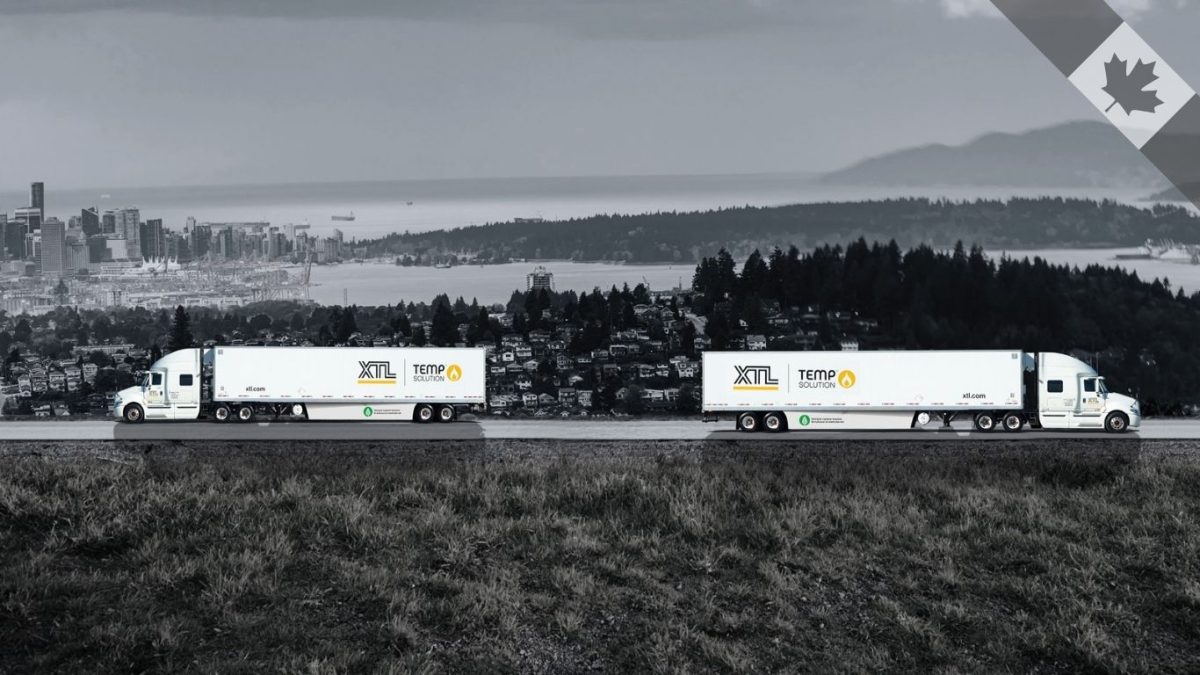Canada’s vast geography presents unique challenges for businesses moving goods across the country and across borders. If you’re wondering how Canadian transport companies operate, here are the answers to 10 of the most common questions, with insights from XTL Transport.
1. Is It Expensive to Ship to Canada?
Shipping costs to Canada depend on several factors, including:
• Shipment origin & destination – Distance and trade imbalances impact pricing.
• Mode of transportation – Air, rail, truck, or sea each have different cost structures.
• Fuel prices & customs fees – Taxes and duties vary by product type.
• Seasonal trends – Peak seasons (e.g., produce season) can increase rates.
Pricing in the transportation industry is more complex than just cost per mile. While many shippers calculate transportation expenses based on mileage, carrier rates are largely driven by market dynamics rather than the actual cost of covering that distance. A key example of this is triangular freight routes, where instead of simple round trips, carriers consider multi-leg routes for efficiency.
For instance, a route like Toronto–Montreal–New York–Toronto allows for better load balancing. In some cases, market rates on one leg of the journey may be lower than the actual cost, but another leg may compensate by being higher than cost. As long as the overall route remains profitable, it makes economic sense for the carrier. This approach highlights the intricacies of freight pricing and how strategic route planning optimizes both costs and efficiency.
2. How Many Trucking Companies Are There in Canada?
There are over 300,000 registered trucking companies in Canada, ranging from small independent operators to large fleets. Trucking moves over 90% of consumer goods and manufactured products. XTL Transport ranks 24th on Today’s Trucking’s list of Canada’s Top 100 for-hire carriers.
3. What Is the Average Salary of a Truck Driver in Canada?
Truck drivers earn between $55,000 and $75,000 per year, depending on experience, location, and haul type. Long-haul and specialized freight drivers often earn more. XTL Transport has been recognized as one of Trucking HR Canada’s Top Fleet Employers, valuing its drivers with competitive pay and benefits.
4. How Long Does It Take to Ship from Vancouver to Toronto?
Transit time between Vancouver and Toronto depends on the shipping method:
- Truckload (Single Driver): A driver can typically cover 500 miles per day, assuming an average speed of 50 miles per hour over 10 hours of driving. With a distance of approximately 2,700 miles, a single-driver truck shipment would take about 5-6 days, including pickup and delivery.
- Truckload (Team Drivers): A team of drivers can alternate shifts, allowing for continuous movement and covering up to 1,000 miles per day, reducing transit time to about 3 days.
- LTL Shipments: Less-than-truckload shipments often involve multiple stops and freight consolidation, which can extend transit time to 6-7 days.
- Rail Freight: Typically takes 6-10 days, depending on scheduling, terminal handling times, and intermodal connections.
- Air Freight: The fastest but most expensive option, with transit times of 1-2 days.
Tip: Reduce transit delays and mitigate risks by partnering with a provider that offers both intermodal and truckload services. This allows for greater flexibility in routing and cost optimization.
5. Who Regulates Trucking Companies in Canada?
The trucking industry in Canada is regulated by both federal and provincial authorities. Transport Canada oversees national regulations, while provincial bodies handle regional compliance. XTL Transport adheres to all regulatory standards, ensuring safety and reliability in our operations.
6. How Do Canadian Transport Companies Handle Cross-Border Shipping?
Cross-border shipping requires compliance with Canada Border Services Agency (CBSA) and U.S. Customs and Border Protection (CBP). Many carriers, including XTL Transport, are C-TPAT certified, ensuring faster customs clearance.
Read: Navigating Transborder Trucking
7. What Are the Top Transport Hubs in Canada
Key logistics hubs include:
• Toronto, Ontario – Largest freight hub
• Montreal, Quebec – Key for rail and ocean freight
• Vancouver, British Columbia – Major west coast port
• Calgary, Alberta – Central for Western Canada logistics
8. What Insurance Coverage Do Canadian Transport Companies Offer?
Most carriers provide basic cargo insurance, typically at $4.41 per kg ($2.00 per lb). However, liability limits vary by province and additional coverage may be required for high-value shipments.
| Country | Standard Carrier Liability |
| Canada | $4.41 per kg ($2.00 per lb) |
| U.S. | $2.00 per lb |
For more details, visit:
Transport Canada – Cargo Liability Regulations
FMCSA Cargo Liability Guidelines
9. How Do Canadian Transport Companies Handle Hazardous Materials?
HAZMAT shipments must comply with Transport Canada and FMCSA (U.S.) regulations. XTL ensures proper classification, labeling, and safety training for hazardous goods.
For more details, visit:
Transport Canada’s Dangerous Goods Regulations
FMCSA Hazardous Materials Regulations
10. What Truck Types and Capacities Are Common in Canada?
• Dry Vans (53ft) – Up to 26 standard pallets
• Refrigerated Trailers – Temperature-controlled freight
• Flatbeds – For oversized cargo
Learn more: How Much Freight Fits on a Truck?
Conclusion
Understanding Canada’s transportation industry is crucial for businesses and individuals alike. XTL Transport’s experience makes us a trusted partner for all your logistics needs. For more information, contact us today.
